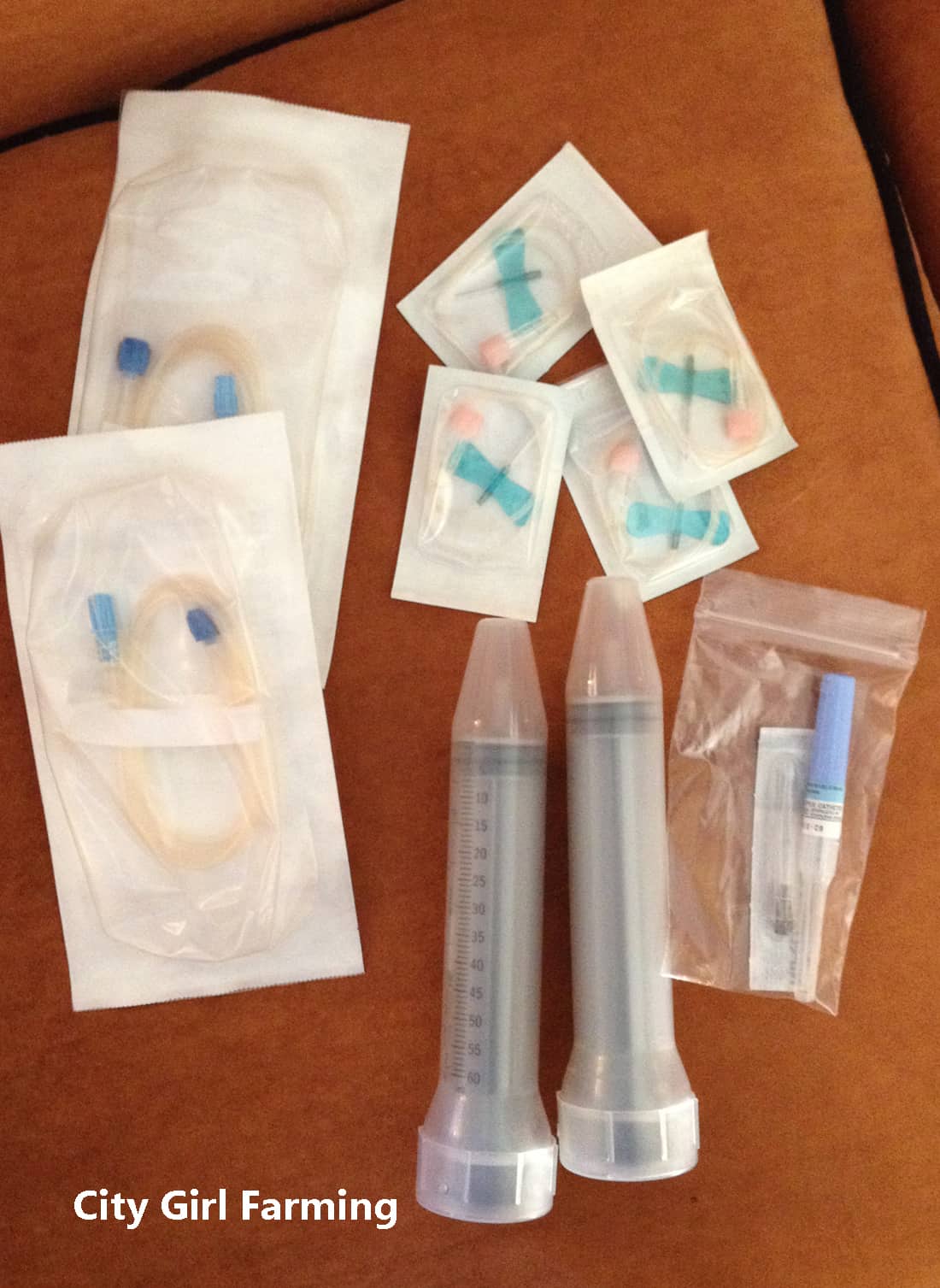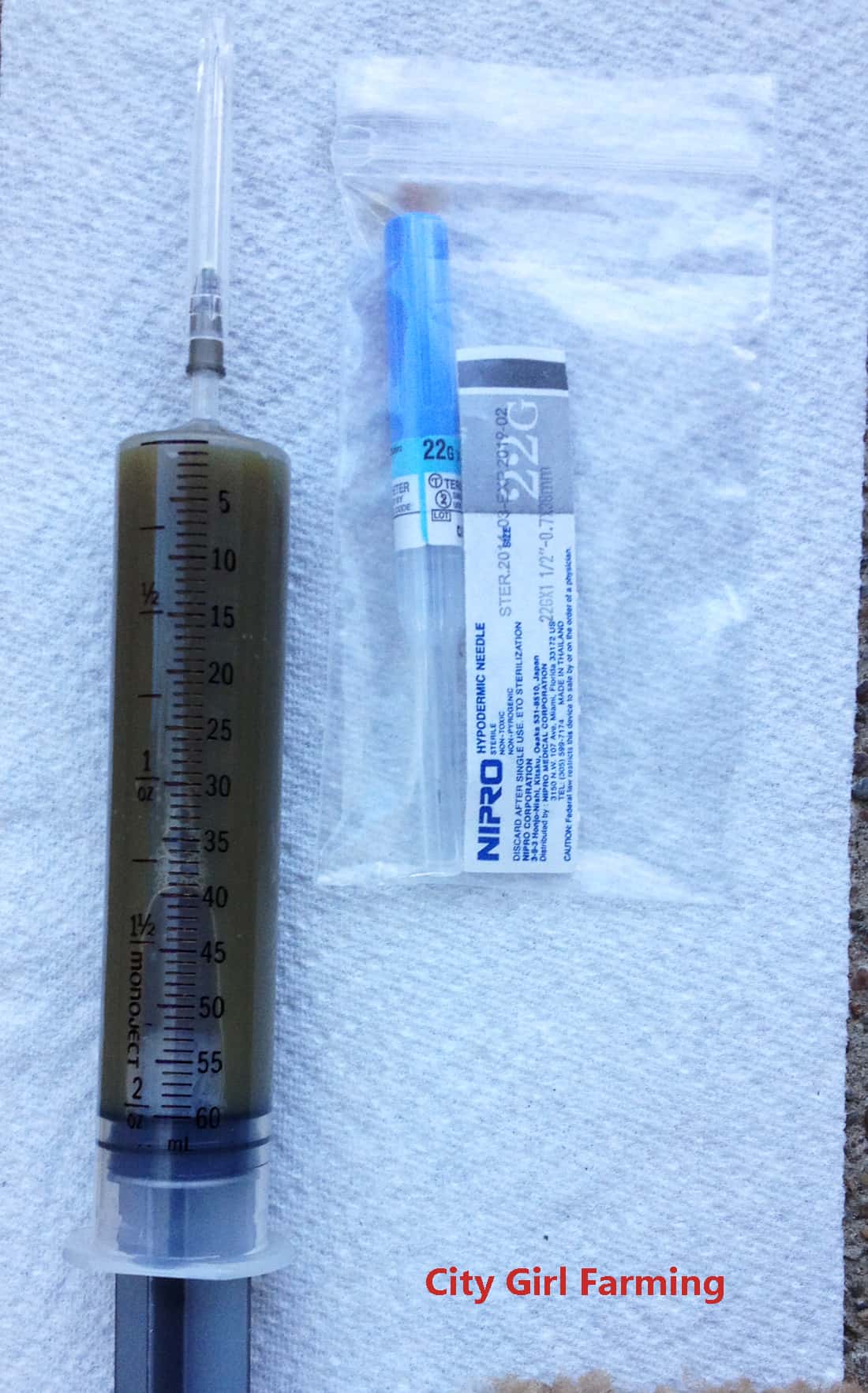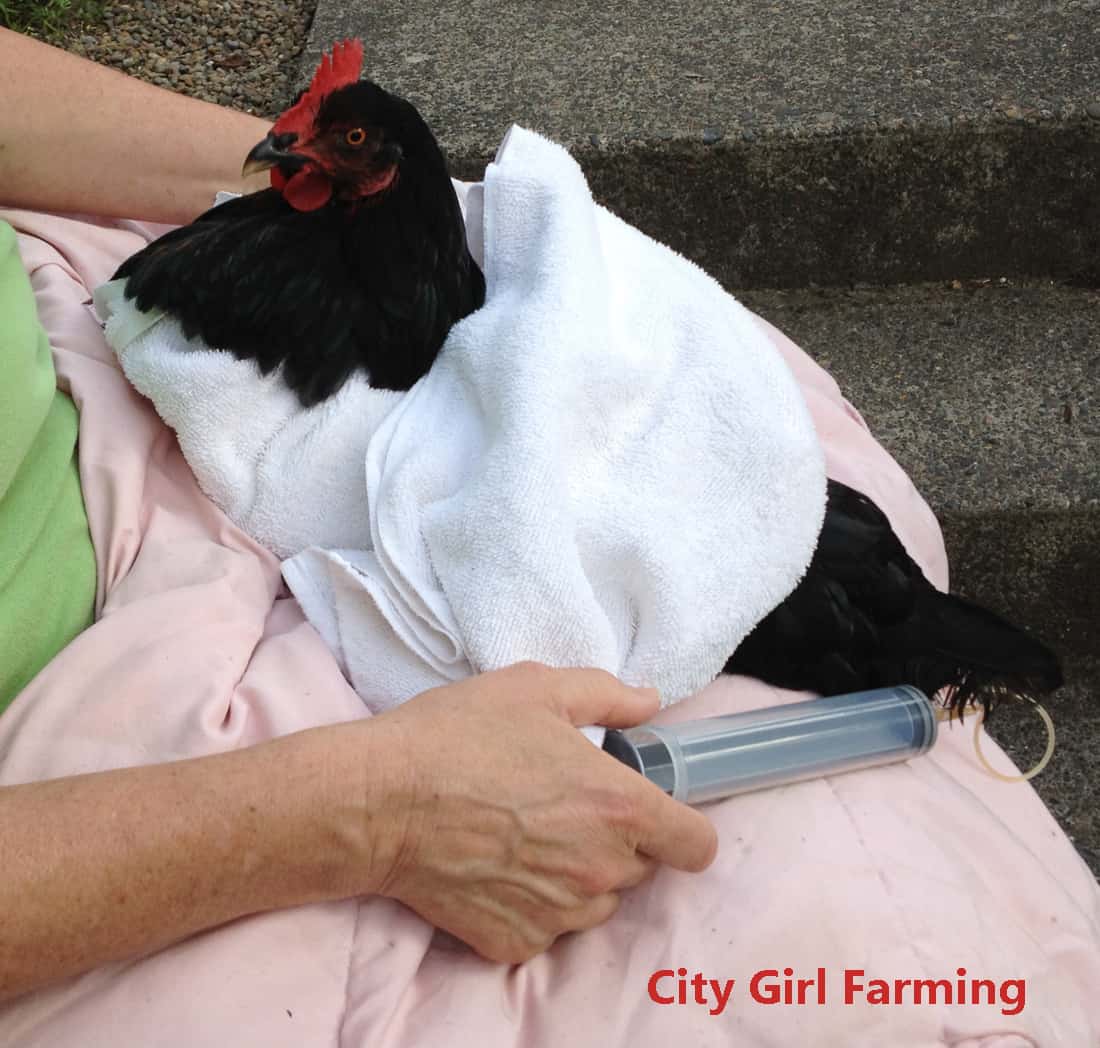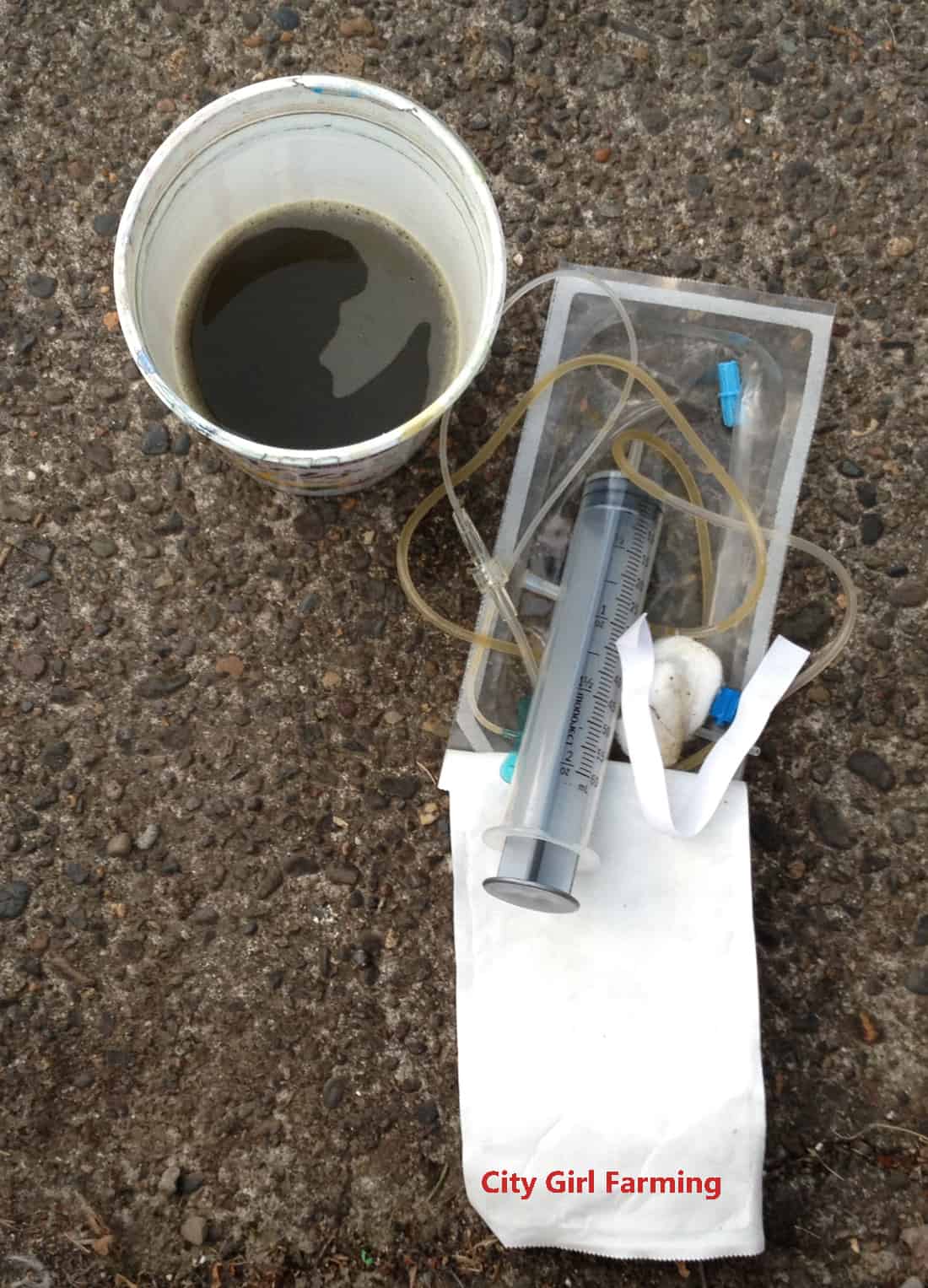
Have you ever had a chicken with a swollen abdomen and not known what to do? Even if you haven’t seen it before, knowing about it before it happens can be helpful.
What Causes a (Chicken) Swollen Abdomen?
Technically, a swollen abdomen in a chicken is called Ascites (or Water Belly). It happens when fluid builds up in the abdominal cavity. As the fluid builds, it pushes on the lungs of the chicken, making it increasingly harder for them to breathe. With decreased respiratory function, the tips of her comb might begin to turn purplish or blue. She might have difficulty moving around and she might have labored breathing. There isn’t a cure.
While not terribly common in backyard flocks, it does happen and can be caused from all sorts of things: genetics, obesity, stress, the build up of proteins in vital organs, exposure to toxic things (eating toxic plants, breathing in toxic air, etc.) among other things.
It’s important to note that there are other causes of swollen abdomen besides Water Belly such as obesity, egg binding, fatty liver, tumors, Marek’s disease, getting a piece of egg stuck somewhere inside that is causing an infection…but in this instance, I’m focusing on Ascites.
Jessica’s Swollen Abdomen
I first noticed Jessica’s swollen abdomen the beginning of July. It felt like a water balloon filled taut, about to burst. Jessica didn’t show any signs of being sick, though. She was still eating, drinking, walking and running, chatting with me. All the normal chicken behavior of a friendly, social hen. I would never had noticed if I hadn’t picked Jess up and encountered her big water balloon belly with my hand. WHOA.
I seriously doubted Jessica was egg bound. She showed no other signs (although her swollen abdomen was very similar to Harriet’s when Harriet was egg bound). So, I did what I often do when the girls have me stumped, and I tried to find a reason for her water weight gain via research.
What seemed to make the most sense was Water Belly (Ascites). And that’s certainly what it felt like. However, Jessica didn’t have any of the high risk factors. She wasn’t overweight. She lived in a low altitude, with a coop that has good ventilation. She was the top hen in the flock and lived a very comfy life.
Of course, there’s no telling what she might have gotten into (toxic plants? Moldy something? Who knows) that could have helped cause this issue.
But regardless, she had a huge liquid mass growing in her abdomen that was larger than a softball.
Some advice said to drain it, others said to leave it. I decided to leave it as she didn’t seem to be struggling with it in any way. And we went on like that for a few weeks. Until one day, the poor girl looked like she was saddle sore, waddling like a pigeon-toed duck, and having a hard time jumping up onto things. She was still eating, drinking, happy, but I could tell she wasn’t very comfortable. Her breathing was also getting labored, as the mass grew and pressed on her lungs. So, I decided to try to drain it.
I don’t know if any of you ever call local vets and ask for weird items like syringes and catheters? Um, yea. It didn’t go over so well….
“Excuse me? You want what? Do you have any experience with this? Do you have any training?”
Well, I watched a YouTube video and did some research.
“We can’t sell you this sort of thing. We suggest you take your hen to a vet who specializes in birds.”
Yea, well, that’s not going to happen. Besides, how hard can it be?
Thankfully I DO have a vet friend, although she’s a cat vet, who has helped me with Peep’s bumblefoot surgery and given me prescriptions when Harriet sounded like Darth Vader. I texted her for the supplies, and she told me to swing by clinic, pick up said supplies, and bring them to her house (with Jessica) so she could teach me how to use them.

It really IS a simple procedure, although I’ve never stuck a needle into the backside of a hen before. (It slid in like butter on a hot knife). Jessica didn’t mind. We drained off 2 ounces of fluid that looked like a green smoothie (which is unfortunate since I drink green smoothies several times per week). My vet friend said she’s never seen fluid like that come out of an animal. She took a picture and sent it to her chicken vet friend who said the same thing. Mystery fluid.
For three days straight, I pulled fluid out of Jessica’s swollen belly. I’d drain it, she’d re-fill it. She was very cooperative. I think it was definitely one of those times when “This hurts me more than it hurts you” was actually true. But we got by. After removing more than three cups of faux-green-smoothie, she was able to run and jump easier than when she was slinging that volume along behind her.
(For those of you that don’t know–like I didn’t–the proper color of this fluid should be more like ginger ale, not sludgy thick green vegetables.)
To be on the safe side, I started diffusing a blend of essential oils for immunity boosting in the coop. I set up the diffuser in a nest box and blew it in on flock at night (I figured since it’s not toxic it wouldn’t hurt to dose everyone). I’m not sure if this contributed, but the mass stopped re-filling with fluid. It’s still there, but not growing (or if it’s growing, it’s very, very slow). And Jessica is happy as a chicken three cups lighter.
The chicken vet, based solely on photos from the phone, suspects that Jessica might have some kind of cancer. My surgical oncologist friend (with human patients), suspects something like a burst organ (unsure of which organs chickens have–she suggested gall bladder or spleen).
Regardless, Jessica is happy and seemingly doing well. It’s been two months now and she’s not showing any signs of slowing down, although I suspect she will slow down, simply because she’s over four years old and there’s a growth on her belly that won’t completely go away.
But for today, Jessica is living the good chicken life and that’s a reason to cheer.
UPDATE: After the writing of this post, Jessica lived another year (and a bit more). When she died, it wasn’t from her swollen abdomen, but from a raccoon attack in the middle of the night. During the year after I drained her abdomen, she lived a normal, happy life. Although the fluid pocket never completely went away, after repeatedly draining it for a couple weeks in the beginning, it went down to a manageable size and stayed that way.
Prevention
As with many things related to raising chickens, there are things completely out of our control. But over all proactive health practices will not only help safeguard against conditions such as Ascites, but will give your hens a healthier life in every area. Helpful practices include limiting feed intake (especially paying attention to protein and sodium levels), giving your flock space to move around (get enough exercise and fresh air), keeping the coop clean and with adequate ventilation, and possibly using essential oils when needed (and with caution).
There have been some interesting studies done on the use of selenium yeast, flax seed oil, Vitamins C and E, Eyebright (an herb), Oregano essential oil and Brewer’s Yeast helping with possible prevention of Ascites in chickens.
Post Script on Treatment
What I did for Jessica was drain the fluids to make her more comfortable used essential oils in a diffuser to help with strengthening her immunity. All that I had read said that she’d never recover, there was no treatment and that over time, her heart and other organs would begin to fail, her breathing become too labored, and she’d die. Of course, I didn’t have an official diagnosis from an Avian vet, and admittedly, I make lots of guesses in the dark, based on what reliable information I can find and try to treat my flock myself.
Please note that I am NOT a veterinarian, I don’t have all the answers, and I am NOT advocating any sort of treatment plan for your animals. If there is a local Avian vet and it’s something you can swing, I wholeheartedly recommend visiting them. If you do decide to treat your flock for anything on your own, please proceed cautiously and armed with as much reliable information as possible.





